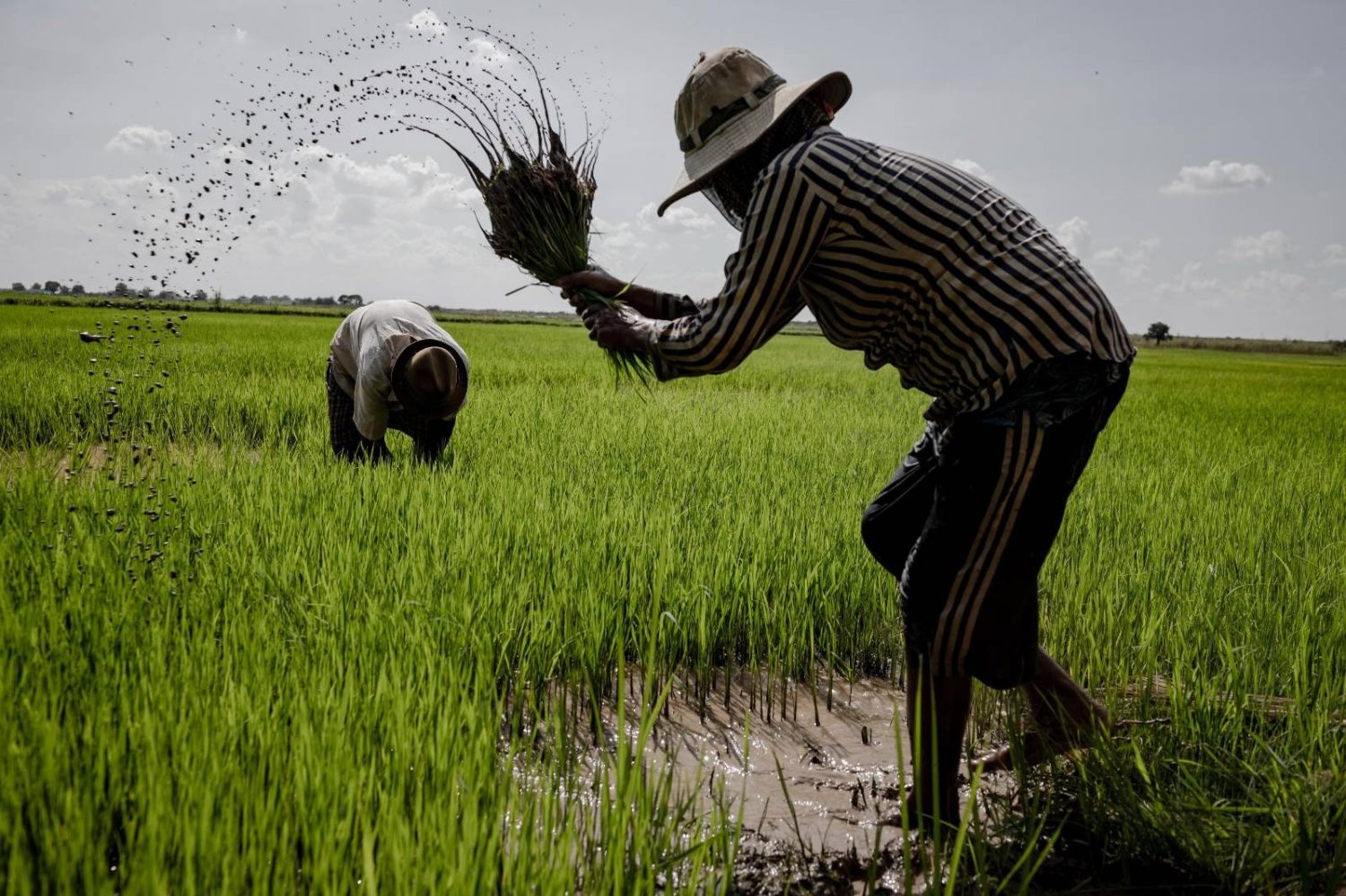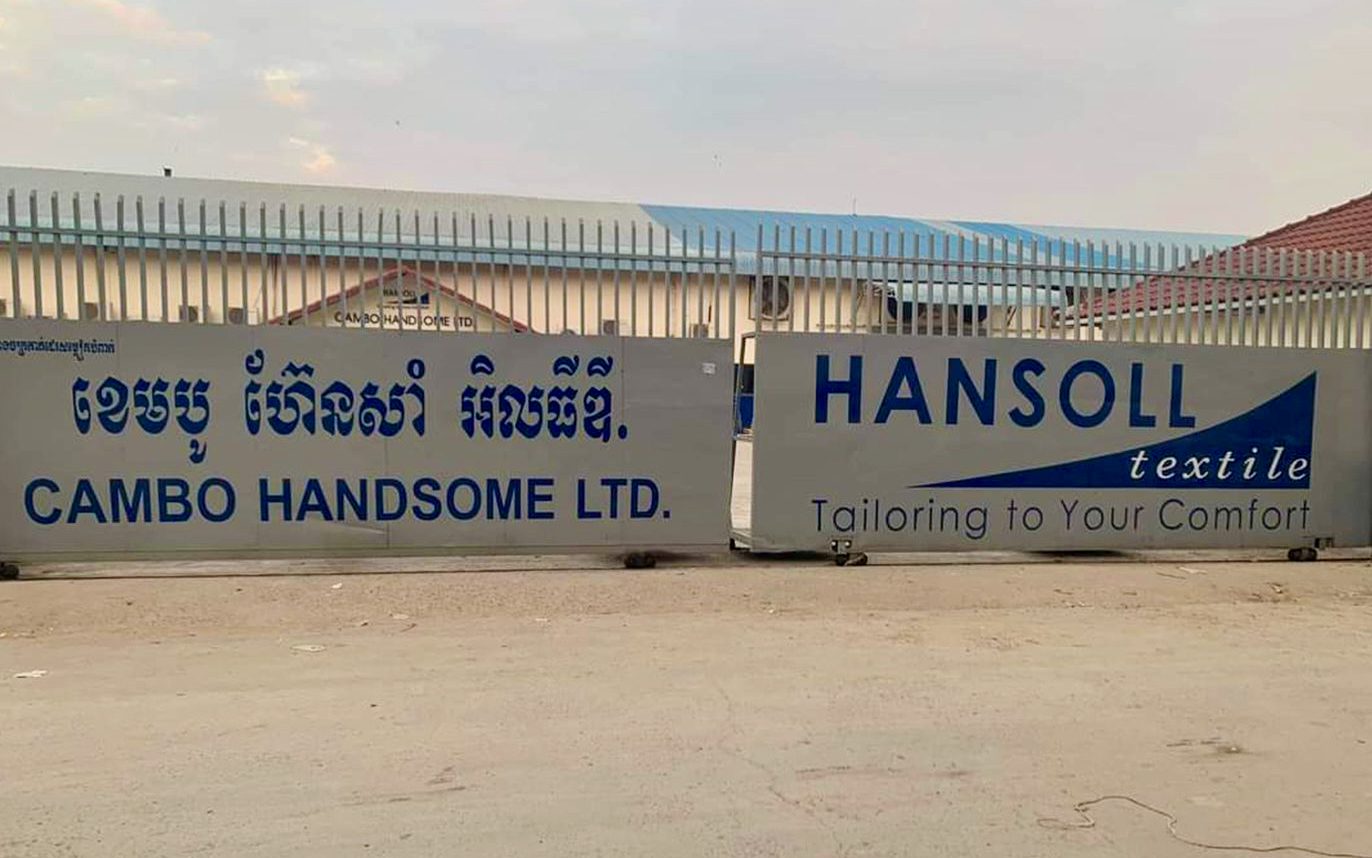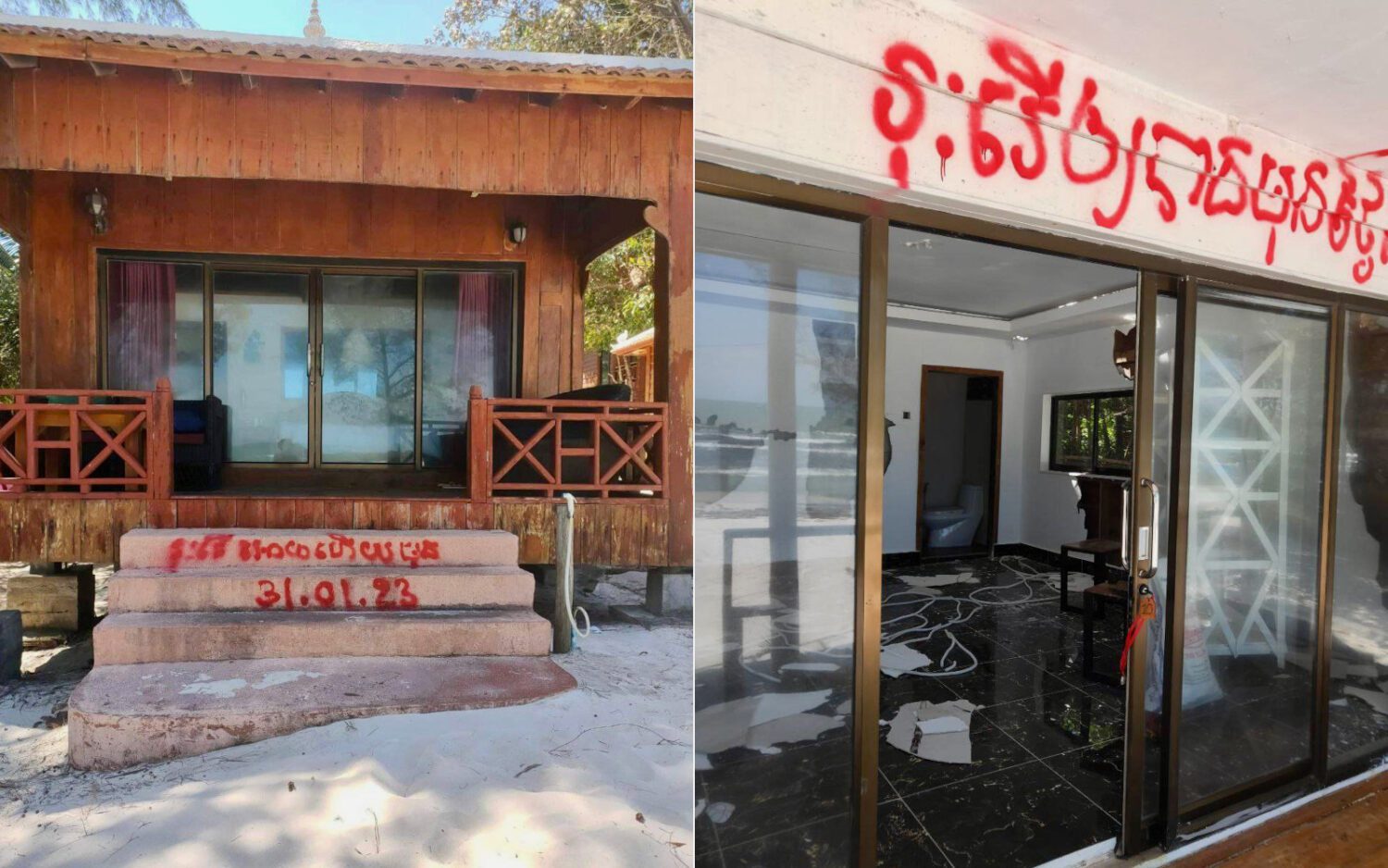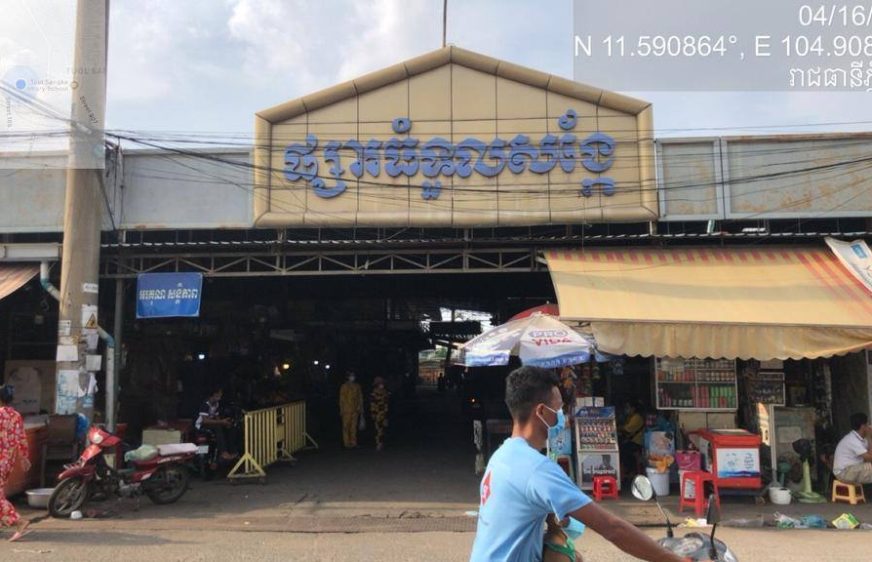From the fields of her rice farm in Kandal province, Thuch Sorn, 71, has seen a lifetime of Cambodian agricultural history.
Much of the changes she’s witnessed have made for a lonelier time in her paddy in Vihear Suor Cheung village.
That’s partly because it’s been difficult to interest her adult children in farming. Young people just don’t seem to like farming anymore, she said, pointing to her own family as an example. Though she and the husband gave each of their six children some land and gold to start new chapters in life, only two are still farming, growing rice and lotus.
“But the other four children don’t farm anymore,” she said. “They work in a garment factory or as construction workers. Some stay home and own small grocery or sugar cane juice shops, open a phone shop, or work in real estate.”
Sorn is one of several farmers and rural residents interviewed about a primary concern across the provinces — agriculture — and how their work and their lives had changed in recent years.
They told of rural villages being gutted of working-age men and women as they migrated for factory and construction work, forcing households that now had insufficient manual labor to undertake machine farming. Hired machine operators, fertilizer and other new costs were putting households into debt, and they faced the prospect of being uprooted altogether, they said. Unpredictable weather patterns amid climate change were an added challenge.
Sorn had experienced many of these things. She said that even though farming now is a bit easier with machines, she now spends a lot of money to use these modern farming tools. In the past, she explained, people used manure or dead leaves as natural fertilizer instead of chemical fertilizer. People also used cows or oxen to plow the soil, and built nonmotorized irrigation systems for their fields.
For labor, Sorn said farmers took turns working for each other without pay. This kind of traditional farming is more physically difficult, Sorn explained, as well as a little slow, but does not require a lot of money to produce a harvest.
Nowadays, Sorn said that farmers need to hire a machine to harvest their rice. Modern irrigation systems also rely on pumps fueled with petrol, which adds to the cost of operations, as does hiring a tractor to help with plowing fields. Chemical fertilizers also eat into farmers’ profits, as a bag of it may cost almost 200,000 riel, or about $50.
“People don’t use cows or buffalo to farm anymore. They’ve sold their animals and bought all the machines,” Sorn said.
Her husband, Kann Mann, 73, said that the climate has also drastically changed over the years. Before the climate was more regular, but now it’s difficult for farmers to predict what the weather will bring. Heavy rainfall that began unseasonably early this year led Mann to use a machine to pump water out of his rice field in order to save a young crop from drowning.
“Normally, it doesn’t rain much in April — it’s usually very hot. But this year, it [was] raining a lot,” he said.
Mann added that agriculture can be a risky enterprise for some farmers today because they borrow money from the bank to invest in their crops. If they can’t produce a good harvest, he said, they could end up losing their home and land to pay off their loans. Mann said he knew of farmers who had been unable to pay back debt to Acleda Bank and had lost their property as a result.
These difficulties have contributed to what Mann perceived as a loss of community ties between farmers. In the old days, he fondly remembered, local farmers gathered every season to work the fields, often taking time to share a meal and a laugh.
Though he’s still farming in his old age, that kind of impromptu social gathering has mostly gone away, he said. He now socializes mostly only when there is a festival or some other ceremony.
“Time changed everything,” he lamented.
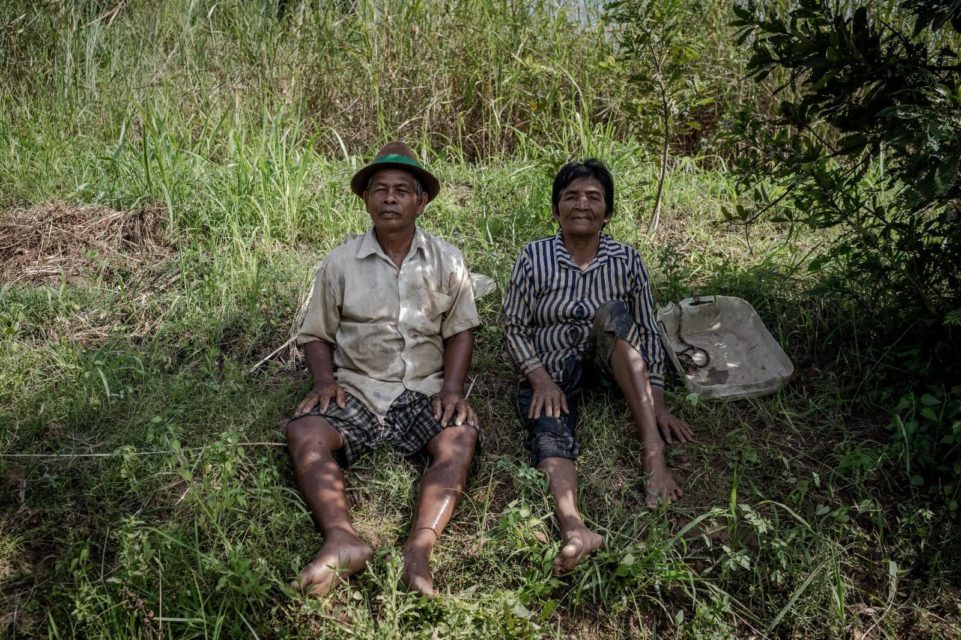
Farmers in other parts of Kandal province and elsewhere told VOD similar narratives of a changing farm culture brought on by a combination of intertwined factors such as climate change and inadequate market prices, as well as labor shortages and increased mechanization.
Rice farmer Man Davy, 37, of Prey Veng province, said her village no longer has enough people to farm in the traditional way. Without manual labor, they have switched from buffalo-drawn plows to gasoline-driven machinery.
“People change to fit modern society, and climate change means the rain and drought comes irregularly,” Davy said.
She believed production from modern methods was worse than that of traditional farming, though Davy said the difference wasn’t large. More crucially, as other farmers said, the pressure to spend money on mechanical and chemical farming tools had made it more difficult to turn a profit, she said.
“Everything is so expensive now. If it continues like this, we as farmers may have to abandon our farms and be forced to migrate to work elsewhere,” Davy said.
Tharn Kunthea, 31, is a rice farmer who also works at a factory in the Vihear Suor Cheung village of Kandal province. Kunthea said she and her husband, Sok Sam, 34, both decided to get factory jobs because they couldn’t rely solely on farming for their income.
They still farm in their free time after their factory work to earn more money, but Kunthea said there’s decreasing interest in growing rice in her village, especially among younger people. She thinks her peers believe farming is hard work, with people now preferring to work in a factory or sell goods from their homes.
“I don’t see many young people farming these days,” she said. “I only see people from 35 to 40 up still farming, but don’t see many below that.”
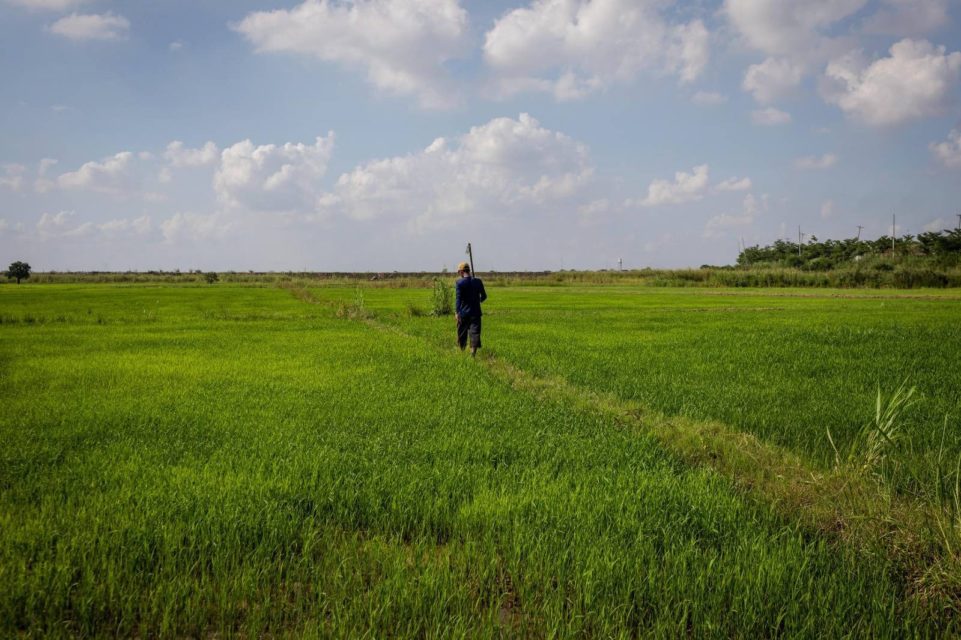
Yang Saing Koma, the founder of the Cambodian Center for Study and Development in Agriculture and a president of Grassroots Democratic Party, said the country’s growing manufacturing and construction sectors had given people job opportunities besides agriculture.
Koma said it was difficult for Cambodian farmers to earn a high income in the current landscape, which is why the sector is unattractive for many younger people. Farmers now have to find ways to make a decent income in order to compete for labor with other industries, he explained.
“The ability to make a profit is getting smaller and smaller because they have to spend a lot of money,” he said. “In other countries, there are requirements from governments to help support farmers, because if we don’t have people farming, it will affect the whole country through food security and food safety. But so far, there is no support from the government on this issue.”
Meas Nee, an independent analyst, said that for the past 15 years, agricultural labor had been flowing to other industries. In previous decades, as much as 80% of the country’s labor pool was in agriculture, while that number is now below 50%.
This trend would continue if there were no measures or new policies to help support the agriculture industry, Nee said.
Part of the pressure for younger people to seek nonfarm work comes from relatively small land holdings among families, he added, pointing out that a family with maybe five members and only a hectare or two of land will struggle to earn sufficient income.
The loss of labor could hurt production, but otherwise he said it’s normal for labor to shift within economies as they mature. He pointed to Japan going through a similar transition, with laborers moving away from farming and into manufacturing in the 1950s and 60s.
“In Cambodia, our government is doing the same — we call for industrial investors to invest in our country in order to create jobs for people,” he said.
On the other hand, Nee said, further encouragement is needed for farmers who produce food for the country. Part of that comes from insufficient ability to make money from their work.
“Farmers not producing a lot is another story, but they invest a lot of money to farm and they don’t have the market, ” Nee said.
He continued that the difficulties for farmers to self-fund the rising expenses of agriculture paired with rising debt loans from the finance industry could cause some growers to “severely fall into debt” without assistance from the government.
“Some cases have already happened. Some farmers stopped farming, some put up their land for rent, and some even sold their land as they don’t expect that they can live from it,” Nee said.
“A problem that I always worry about for the future is that, when farmers lose their confidence in farming, in order to restore agriculture, we’ll need to call for agricultural investors from outside [the country] to come to farm — and export out of Cambodia.”
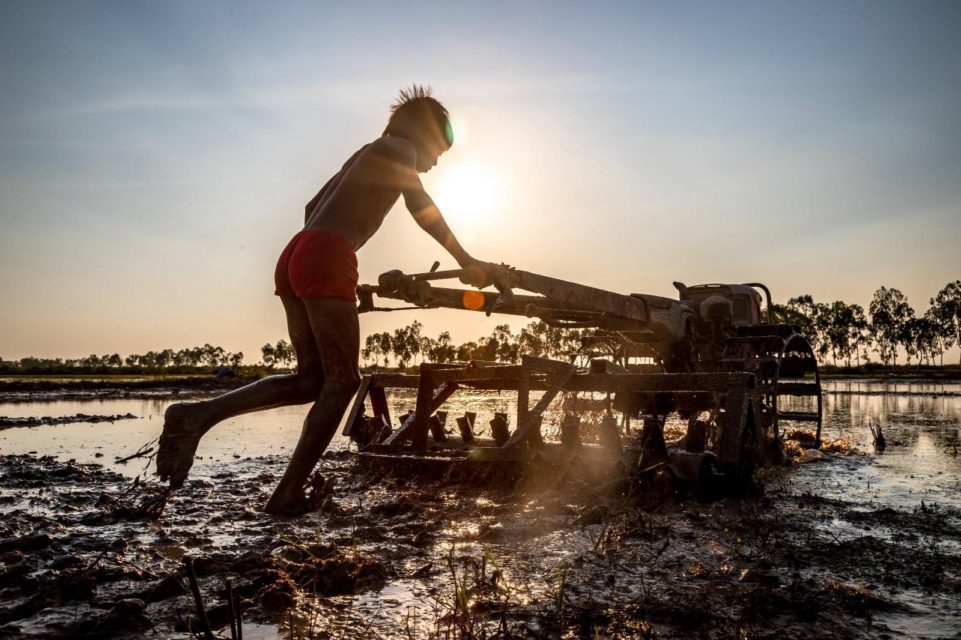
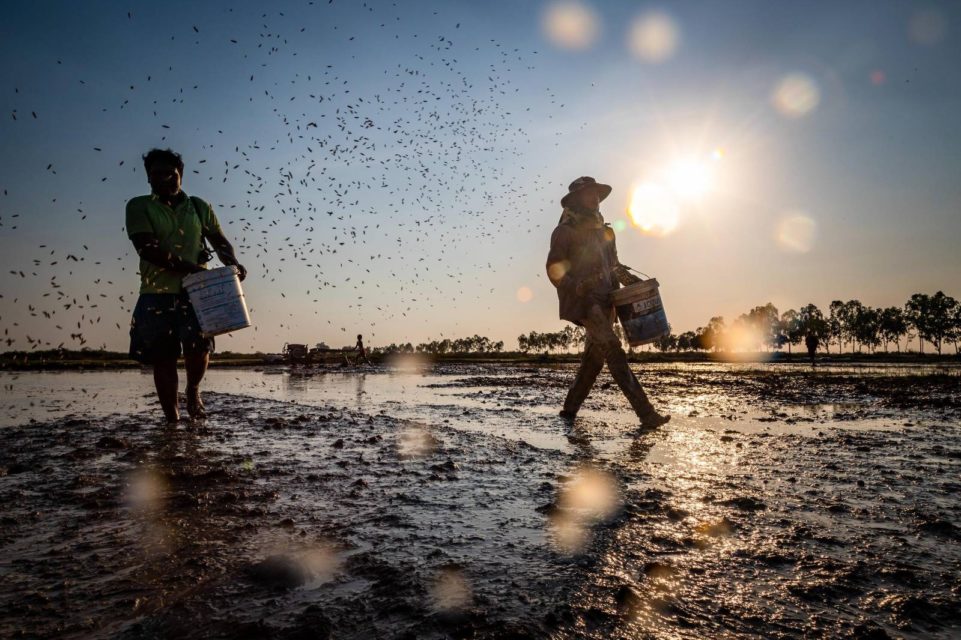
Bos Chert and her husband Khem Khum have already left the country after expenses piled up at their farm in Banteay Meanchey. Struggling with the costs of fertilizer and herbicides, the couple invested in pig farming for three to four years, but lost all the money they had borrowed.
“It wasn’t going forward but going backward in debt,” Chert said.
With thousands of dollars owing, the couple snuck into Thailand illegally, at times hiding from immigration police as they looked for work.
“Coming to work in Thailand is very difficult, but we had to be resilient as there wasn’t any job in Cambodia that I could do. It’s difficult and I have no choice,” Chert said, adding that the couple now worked at a factory in Thailand. “In Srok Khmer, I really don’t know what I can do. If I grow some vegetables to sell there, I don’t think I could sell it for a great price.”
In Kandal’s Koh Thom district, Chea Seang, 50, said unexpected rainfall this year had drowned his rice and corn crops before he could harvest them. He is now left holding only the burden of debt and nothing to show for it. The transition to modern farming had raised the potential for production, he said. But becoming a cog in the market has been a harsh experience.
“If the price of the fertilizer per sack is this expensive, us farmers will die, and we will end up borrowing loans, and we soon maybe we will sell all our land — maybe in the next five years. And then at the end there will be nothing left for the farmer.”


